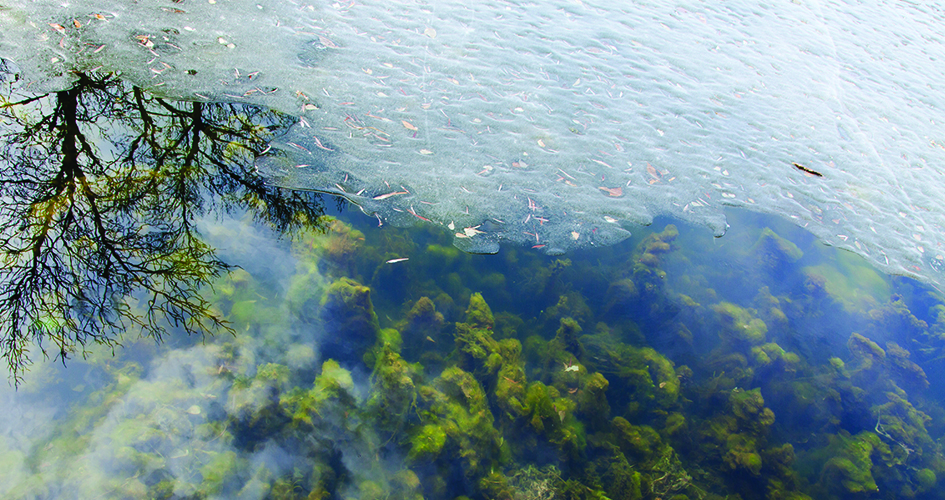Pond Weeds and Algae Under the Ice
People often notice pond weeds and algae growing late in the season when freezing conditions are beginning to develop. This brings to mind the question: What exactly happens to pond weeds and algae in the winter?

To begin with, controlling weeds and algae in near freezing conditions becomes quite difficult. All pond herbicides and pond algaecides require water above 45 degrees F in order to work. Most people think that this is because of limitations on the chemicals. In reality, the plant growth and uptake slows down to nearly nothing. Due to this, the plant simply picks up too small an amount of chemical to harm it.
Another consideration is that as the chemicals near freezing temperatures, they will lose their effectiveness. Most herbicides are designed for action above freezing, targeting the plants at their best growing conditions. With this in mind, chemicals are not engineered to function in near freezing conditions and are not designed to be freeze proof.
As tempting as it might be to treat the weeds and algae that you see, I would recommend not treating at these very low temperatures and instead add pond dye and beneficial bacteria during these cold times to limit light penetration and lower nutrient levels in the pond. These products are designed to effectively treat in cooler temperatures. They will not kill any weeds or algae, but they do limit how quickly they can grow in cooler water.
Overall, avoid treating algae and submerged weeds at temperatures below 45 degrees F. Use colorants (like Crystal Blue, Black Out, or Ocean) and beneficial bacteria (like Natural Pond Cleaner) during cold conditions to aid in pond care over the winter season.
